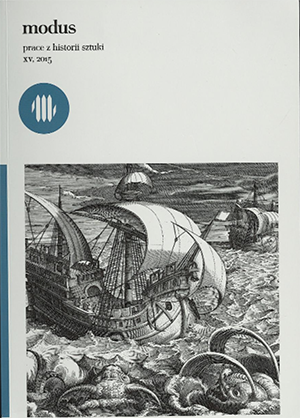Nie tylko malarstwo - aktualizacja w nowożytnej kulturze religijnej. Wybrane zagadnienia i problematyka badawcza
Not only Painting: The Contemporisation in Early Modern Religious Culture. Selected Questions and Research Problems
Author(s): Mateusz ŁepkowskiSubject(s): History, Fine Arts / Performing Arts, Visual Arts, Modern Age, 17th Century, Sociology of Art
Published by: Wydawnictwo Uniwersytetu Jagiellońskiego
Keywords: paintings;iconography;religious art;
Summary/Abstract: Polish seventeenth-century sacred painting has for a long time been outside the main scope of the research interests of historians of early modern art. The findings of respected scholars from half a century ago have nowadays been mechanically repeated, both in specialist and popular publications, in spite of the fact that the same scholars, at the end of their careers, had postulated a revision of the results of their earlier research. Contemporisation as a tendency in Polish early modern painting was described for the first time by Władysław Tomkiewicz in his classic study published in 1951. Yet the political situation and ideological constraints of the period had influenced the methodology employed by the scholar, and many of his findings and observations included in this work did not stand the test of time.The phenomenon of contemporisation, understood as a conscious and deliberate depiction in a religious painting of references to the present, consisting, for example, of portraits in assfsfenza and crypto-portraits, contemporary costume, allusions to local staffage and employing elements of local architecture and landscape as well as - more or less explicit - references to the current political, religious and social situation, is nota typically Polish tendency. What is more, it is neither immediately related to the post-Tridentine era, nor is it restricted exclusively to fine arts. Similar iconographic solutions appear almost all over Europe. Their beginnings reach back to the Middle Ages and various contemporisation devices can be found in nearly all aspects of religious culture, starting from literature and homiletics, through theatre and mystery plays, to music.A researcher who undertakes an attempt at analysing and interpreting contemporised works of sacred art is faced with a number of methodological problems resulting, above all, from the scarcity of written documentary sources and the usually mediocre artistic quality of the analysed works. In order not to yield to the temptation of constructing cascading hypotheses based on meagre premises, it is necessary to exercise a scholarly restraint and to get the possibly deepest insight into the context in which a given painting arose and the purpose for which it was made, and then to inscribe the work in the general cultural tendencies of the epoch. The context can be built by conscious and critical use of the results of other disciplines dealing with the study of cultural history. It is only through juxtaposing a work of art with literature, ritual and custom that one can arrive at its possibly full and obje
Journal: Modus. Prace z historii sztuki
- Issue Year: 2015
- Issue No: 15
- Page Range: 145-160
- Page Count: 16
- Language: Polish

